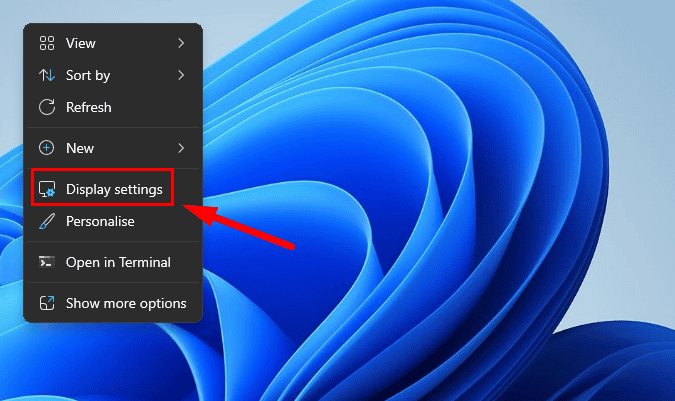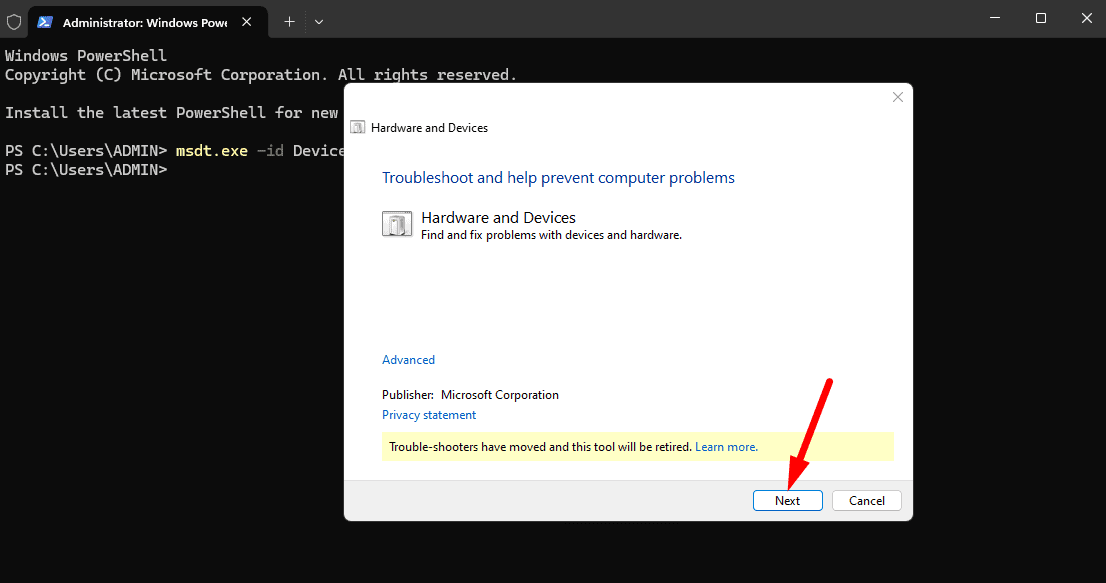Second Monitor Lagging on Windows 11? Here's How To Fix It
Read our disclosure page to find out how can you help MSPoweruser sustain the editorial team Read more

Fix all your driver issues with PC HelpSoft Driver Updater:
Easily update and fix driver issues on your PC in just three steps with PC HelpSoft Driver Updater:
- Download and install PC HelpSoft Driver Updater.
- Scan your PC to find outdated or missing drivers.
- Click on Update Now to quickly install the latest and original drivers.
If you’ve noticed your second monitor lagging on Windows 11, don’t panic. It’s a fairly common issue that’s caused by outdated drivers, system performance issues, or incorrect display settings. Fortunately, there are several steps you can take to diagnose and fix it.
Let me show you how.
Quick Fixes
- Try these solutions first:
- Update Windows
- : Press Windows I > Windows Update > Check for updates > Download and install. Check the connection and the cable
Update Display and Monitor Drivers
- Outdated or corrupt display drivers are the most common causes of lagging on secondary monitors. Here’s how to update the drivers:
- Press Windows X and select Device Manager

- Expand the Display adapters section, right-click on your graphics card, and select Update driver

- Choose Search automatically for drivers and follow the on-screen instructions. Repeat the same process for the monitor drivers.

Alternatively, you can use PC HelpSoft Driver Updater to automatically handle the process and save you time compared to manual updates.
Restart your computer to see if the issue is resolved.Roll Back Display and Monitor Drivers
If the issue started after a recent update, you may need to roll back to a previous version of your graphics or monitor drivers. Sometimes, new drivers introduce compatibility problems that cause lag or other display issues. Follow the steps below:
- Open Device Manager again (Windows X, then select Device Manager).
- Expand the Display adapters section, right-click on your graphics card, and select Properties.

- Go to the Driver tab and click on Roll Back Driver (if available). Follow the instructions and restart your system. Repeat the same process for monitor drivers.

If the option is grayed out, it means there’s no previous version available. Move to the next fix.
Uninstall and Reinstall Display and Monitor Drivers
Alternatively, uninstalling and reinstalling the display and monitor drivers might help if they’re corrupt. Here are the steps to follow:
- Open the Device Manager, right-click on your graphics card under Display adapters, and select Uninstall device.

- Confirm you want to uninstall the device. Do the same under the Monitors section.

Restart your computer. Windows should automatically reinstall the necessary drivers upon reboot.
Otherwise, you can download and install the latest ones manually from the manufacturer’s website.
Run System File Checker (SFC) and DISM
Corrupted system files can cause several performance issues, including lag on external monitors. Running the System File Checker (SFC) and the Deployment Imaging Service and Management Tool (DISM) can help identify and repair them. Here’s how:
- Right-click on the Start menu and tap Terminal (Admin).

- Type sfc /scannow and press Enter. Wait for the scan to complete and follow the prompts if it finds any issues.

- After the SFC scan, Type DISM /Online /Cleanup-Image /RestoreHealth and press Enter. Allow the process to complete. This could take some time, so be patient.

After the scans finish, restart your PC and check if the lag issue persists.
Perform a Clean Boot
A clean boot starts Windows with only the essential services and drivers. This can help identify if third-party applications or services are causing the monitor lag. Follow the steps below:
- Press Windows R to open the Run dialog box. Type msconfig and hit Enter.

- In the System Configuration window, go to the Services tab. Check the Hide all Microsoft services box and click Disable all.

- Go to the Startup tab, click Open Task Manager, and disable all startup items.

- Close Task Manager, then go back to the System Configuration window and click OK. Restart your computer.
Check if the lag is still present. If the issue is resolved in clean boot mode, you can enable services and startup items one by one to identify the culprit.
Change the Refresh Rate
Sometimes, the refresh rate settings between your primary and secondary monitors might not be synced correctly, leading to lag or stuttering. To adjust it:
- Right-click on the desktop and select Display settings.

- Scroll down and click on Advanced display.

- Select your second monitor from the drop-down menu.
- Under Choose a refresh rate, select 60 Hz.

Disable Hardware Acceleration
Many modern applications, including web browsers and video players, use hardware acceleration to improve performance. However, this can sometimes cause issues with the display, particularly when using a second monitor. Here’s how to disable it:
Google Chrome
- Open Chrome and type chrome://settings in the address bar.
- Tap System, then toggle off Use graphic acceleration when available.

- Relaunch Chrome.
Microsoft Edge
- Open Edge and type edge://settings/system in the address bar.
- Turn off the Use graphic acceleration when available option.

- Restart Edge.
Run the Hardware and Devices Troubleshooter
Windows 11 has a built-in troubleshooter that can automatically detect and fix issues related to hardware and devices, including display and monitor problems. Follow the steps below to run it:
- Press the Windows Key X, then tap Terminal (Admin).

- Type msdt.exe -id DeviceDiagnostic and press Enter.

- The Hardware and Devices window will pop up. Tap Next to start troubleshooting.

The troubleshooter will scan for issues and attempt to fix them. Follow any on-screen instructions.
Repair Install Windows 11
If none of the previous steps helped, performing a repair install of Windows 11 might be necessary. This will reinstall the operating system without affecting your files, apps, or settings.
- Open Settings (Win I) and click Recovery on the right side.

- Click the Reinstall now button under “Fix problems using Windows Update.”

- Click OK to confirm.

- Windows Update will automatically begin downloading and installing the repaired version of Windows 11.
- Once the installation is complete, click Restart now when prompted.
So, now you know how to fix your second monitor when it’s lagging on Windows 11. With the above steps, you can resolve the issue and get your display working smoothly again. Try the quick solutions before moving to the complex ones.
Also, learn how to deal with similar problems like your second monitor repeatedly turning on and off or having no sound after connecting it.
The above is the detailed content of Second Monitor Lagging on Windows 11? Here's How To Fix It. For more information, please follow other related articles on the PHP Chinese website!

Hot AI Tools

Undresser.AI Undress
AI-powered app for creating realistic nude photos

AI Clothes Remover
Online AI tool for removing clothes from photos.

Undress AI Tool
Undress images for free

Clothoff.io
AI clothes remover

AI Hentai Generator
Generate AI Hentai for free.

Hot Article

Hot Tools

Notepad++7.3.1
Easy-to-use and free code editor

SublimeText3 Chinese version
Chinese version, very easy to use

Zend Studio 13.0.1
Powerful PHP integrated development environment

Dreamweaver CS6
Visual web development tools

SublimeText3 Mac version
God-level code editing software (SublimeText3)

Hot Topics
 1359
1359
 52
52
 win11 activation key permanent 2025
Mar 18, 2025 pm 05:57 PM
win11 activation key permanent 2025
Mar 18, 2025 pm 05:57 PM
Article discusses sources for a permanent Windows 11 key valid until 2025, legal issues, and risks of using unofficial keys. Advises caution and legality.
 win11 activation key permanent 2024
Mar 18, 2025 pm 05:56 PM
win11 activation key permanent 2024
Mar 18, 2025 pm 05:56 PM
Article discusses reliable sources for permanent Windows 11 activation keys in 2024, legal implications of third-party keys, and risks of using unofficial keys.
 Acer PD163Q Dual Portable Monitor Review: I Really Wanted to Love This
Mar 18, 2025 am 03:04 AM
Acer PD163Q Dual Portable Monitor Review: I Really Wanted to Love This
Mar 18, 2025 am 03:04 AM
The Acer PD163Q Dual Portable Monitor: A Connectivity Nightmare I had high hopes for the Acer PD163Q. The concept of dual portable displays, conveniently connecting via a single cable, was incredibly appealing. Unfortunately, this alluring idea quic
 The Best Monitor Light Bars of 2025
Mar 08, 2025 am 03:02 AM
The Best Monitor Light Bars of 2025
Mar 08, 2025 am 03:02 AM
Reduce eye strain and brighten your workspace with a monitor light bar! These handy gadgets adjust brightness and color temperature, some even offering auto-dimming. This updated review (03/04/2025) highlights top picks across various needs. BenQ
 Top 3 Windows 11 Gaming Features That Outshine Windows 10
Mar 16, 2025 am 12:17 AM
Top 3 Windows 11 Gaming Features That Outshine Windows 10
Mar 16, 2025 am 12:17 AM
Upgrade to Windows 11: Enhance Your PC Gaming Experience Windows 11 offers exciting new gaming features that significantly improve your PC gaming experience. This upgrade is worth considering for any PC gamer moving from Windows 10. Auto HDR: Eleva
 How to Create a Dynamic Table of Contents in Excel
Mar 24, 2025 am 08:01 AM
How to Create a Dynamic Table of Contents in Excel
Mar 24, 2025 am 08:01 AM
A table of contents is a total game-changer when working with large files – it keeps everything organized and easy to navigate. Unfortunately, unlike Word, Microsoft Excel doesn’t have a simple “Table of Contents” button that adds t
 This Wild Ultra-Wide Alienware Monitor is $300 Off Today
Mar 13, 2025 pm 12:21 PM
This Wild Ultra-Wide Alienware Monitor is $300 Off Today
Mar 13, 2025 pm 12:21 PM
Alienware AW3225QF: The best curved 4K display, is it worth buying? The Alienware AW3225QF is known as the best curved 4K display, and its powerful performance is unquestionable. The fast response time, stunning HDR effects and unlimited contrast, coupled with excellent color performance, are the advantages of this monitor. Although it is mainly aimed at gamers, if you can accept the shortcomings of OLED, it is also suitable for office workers who pursue high efficiency. Widescreen monitors are not only loved by gamers, but also favored by users who value productivity improvement. They are great for work and enhance anyone’s desktop experience. This Alienware monitor is usually expensive, but is currently enjoying it
 ReactOS, the Open-Source Windows, Just Got an Update
Mar 25, 2025 am 03:02 AM
ReactOS, the Open-Source Windows, Just Got an Update
Mar 25, 2025 am 03:02 AM
ReactOS 0.4.15 includes new storage drivers, which should help with overall stability and UDB drive compatibility, as well as new drivers for networking. There are also many updates to fonts support, the desktop shell, Windows APIs, themes, and file




